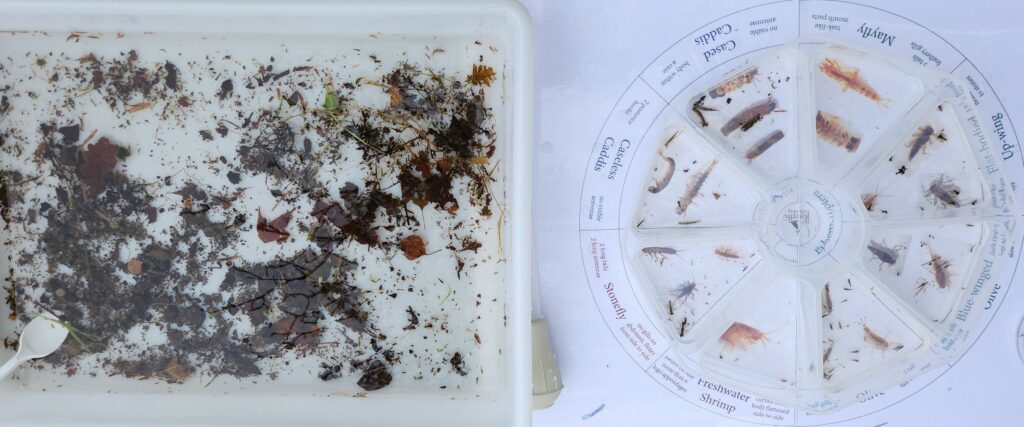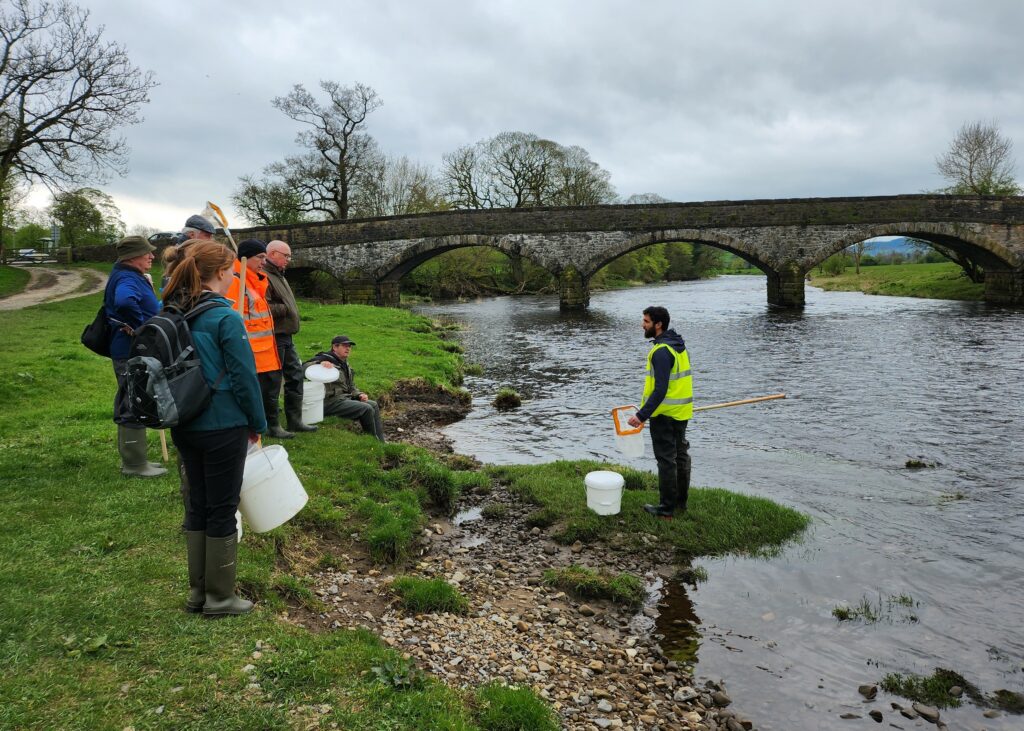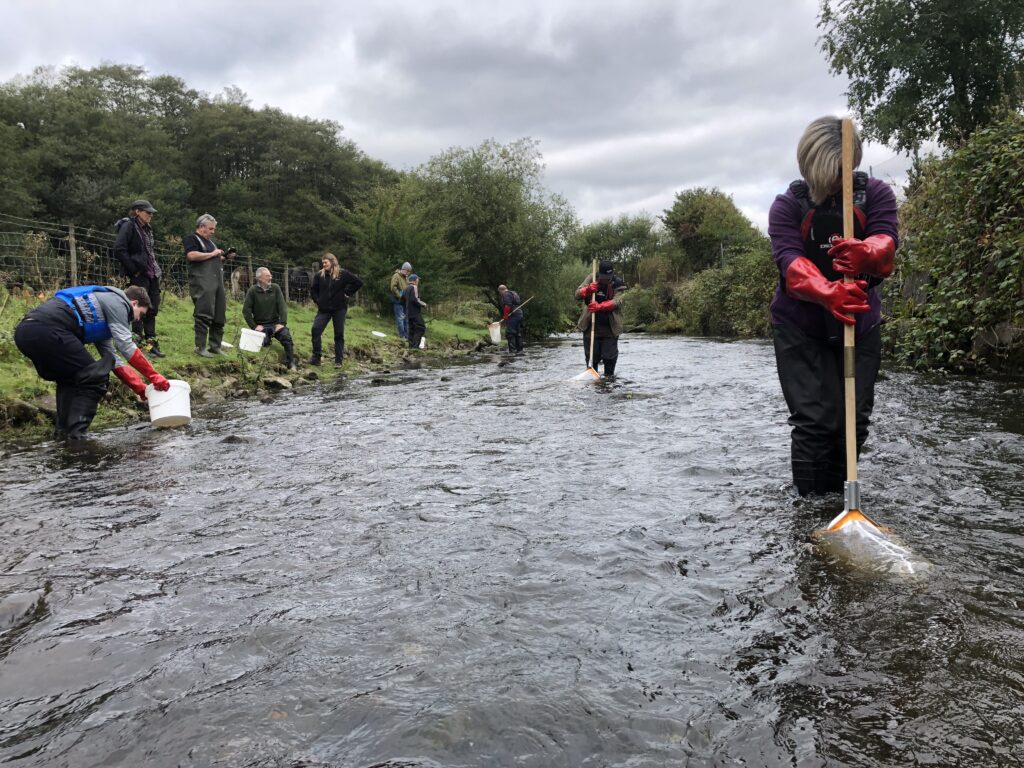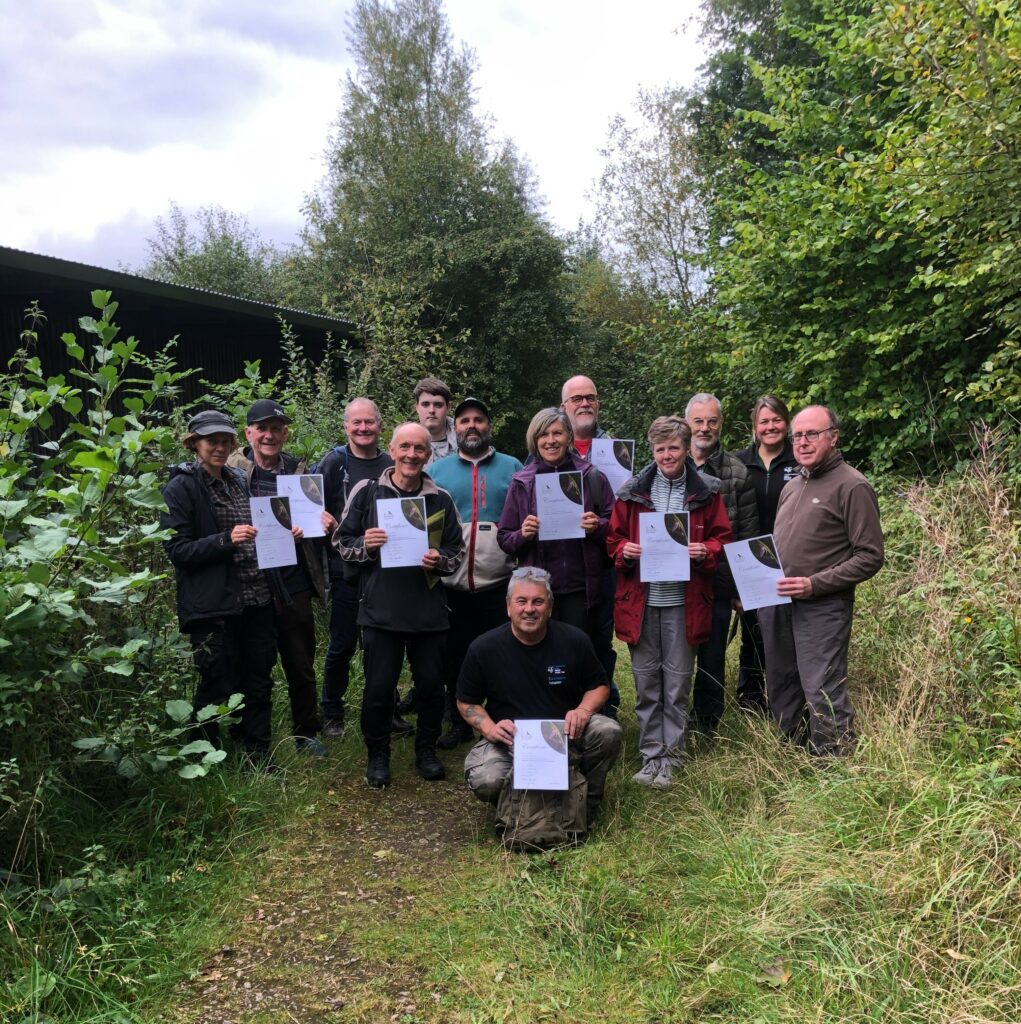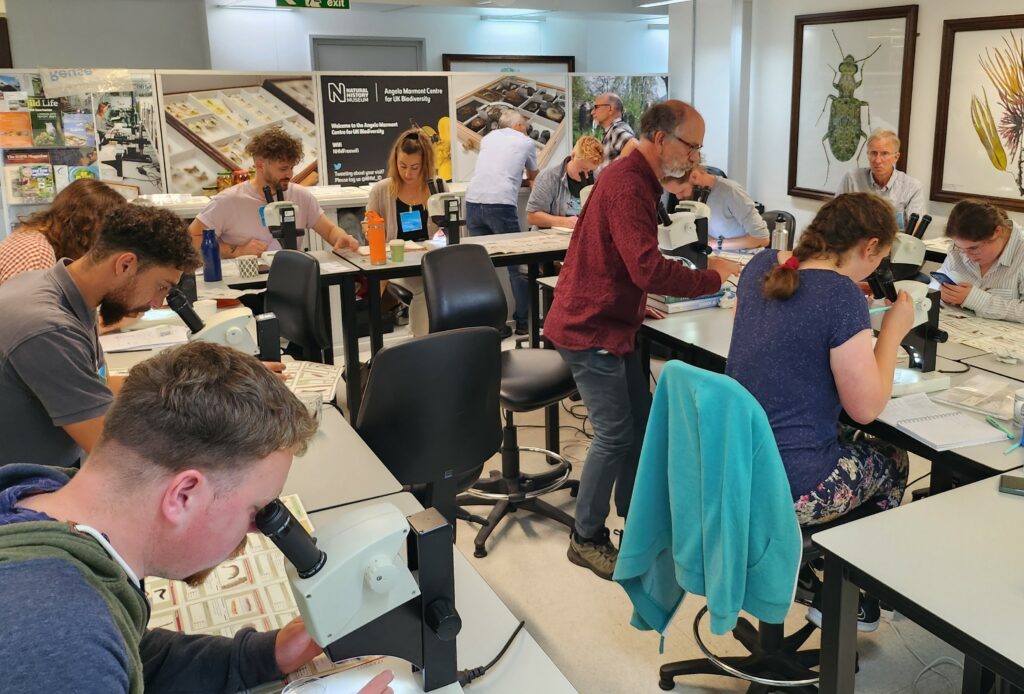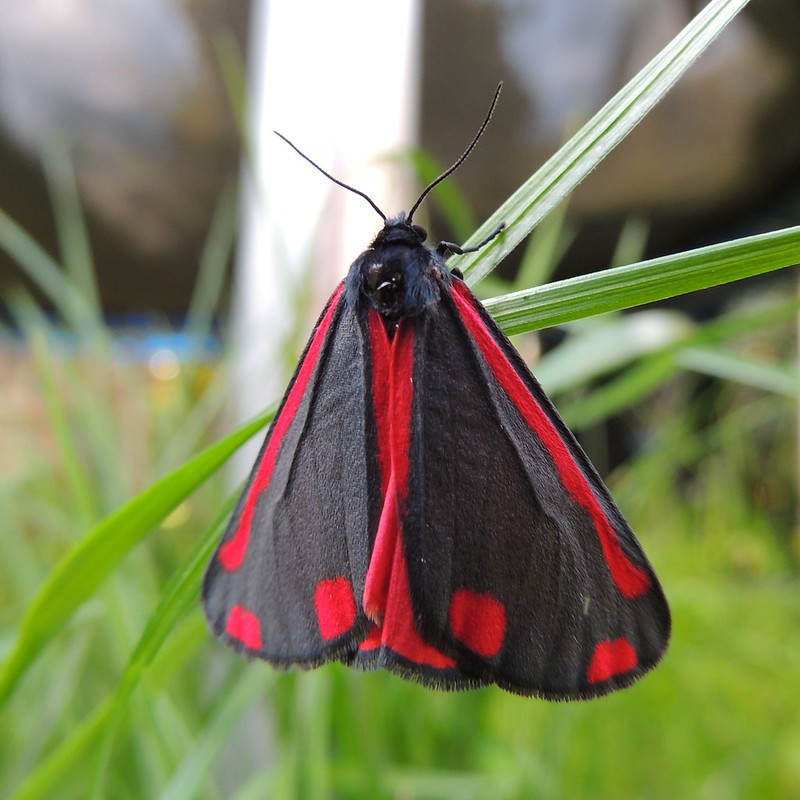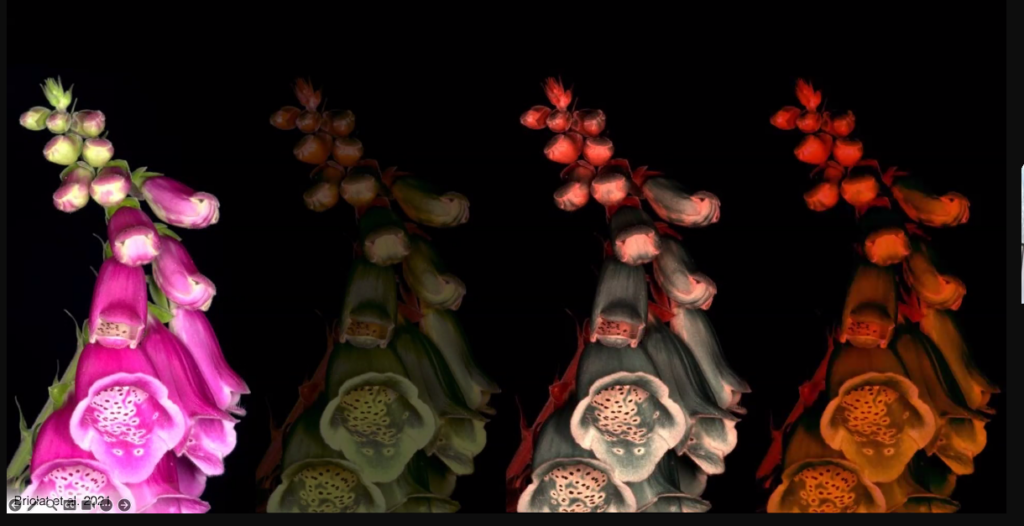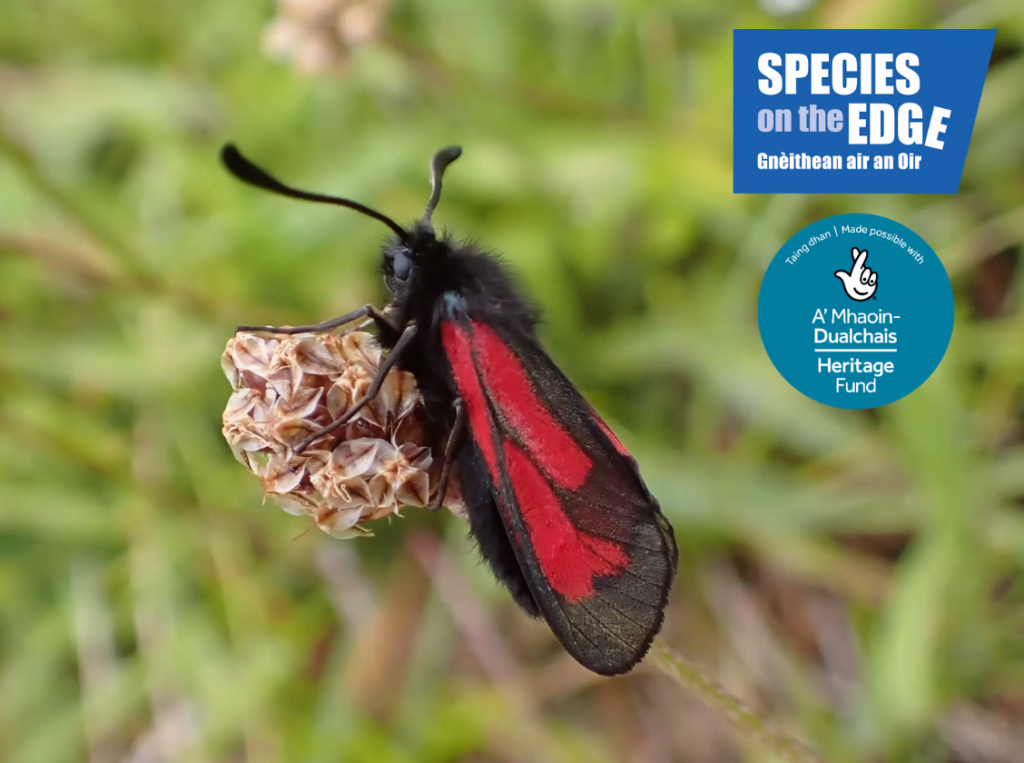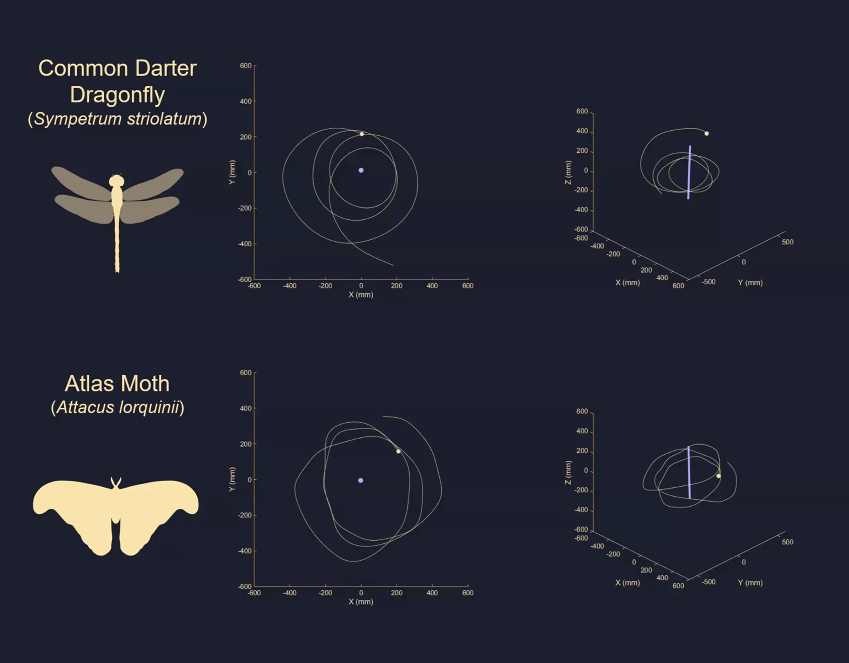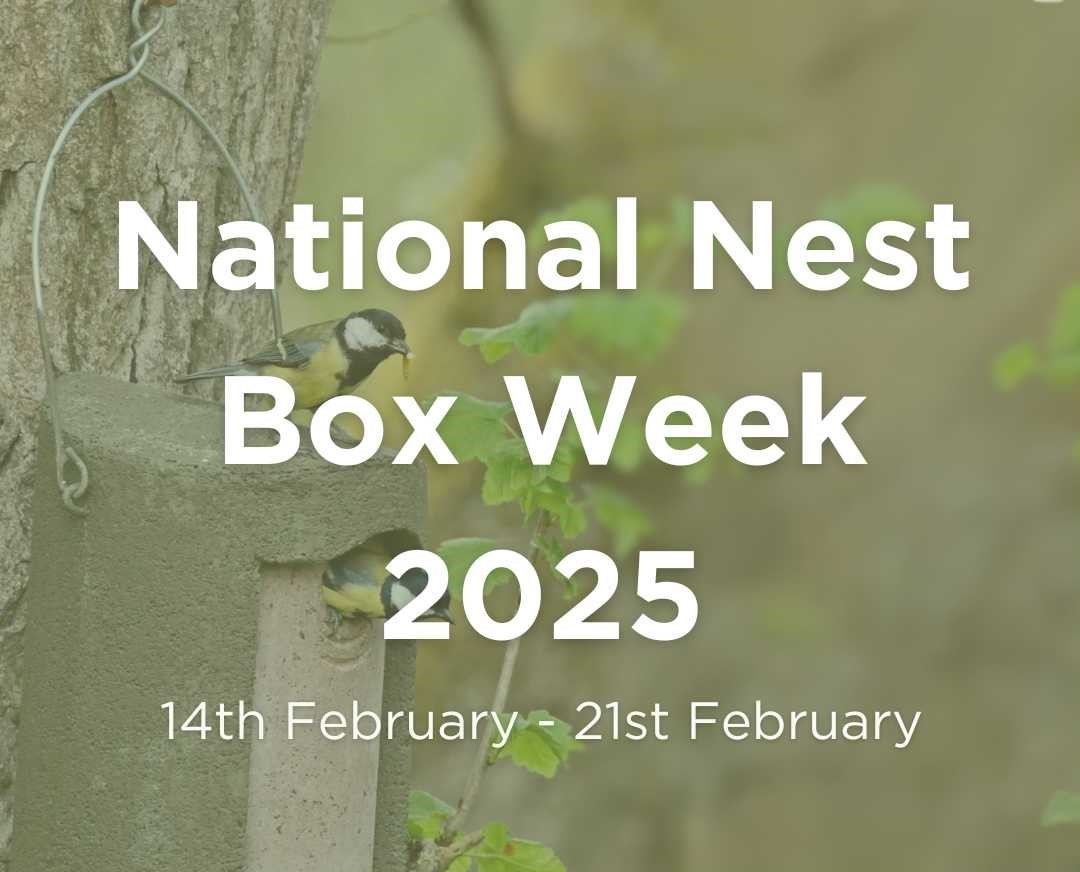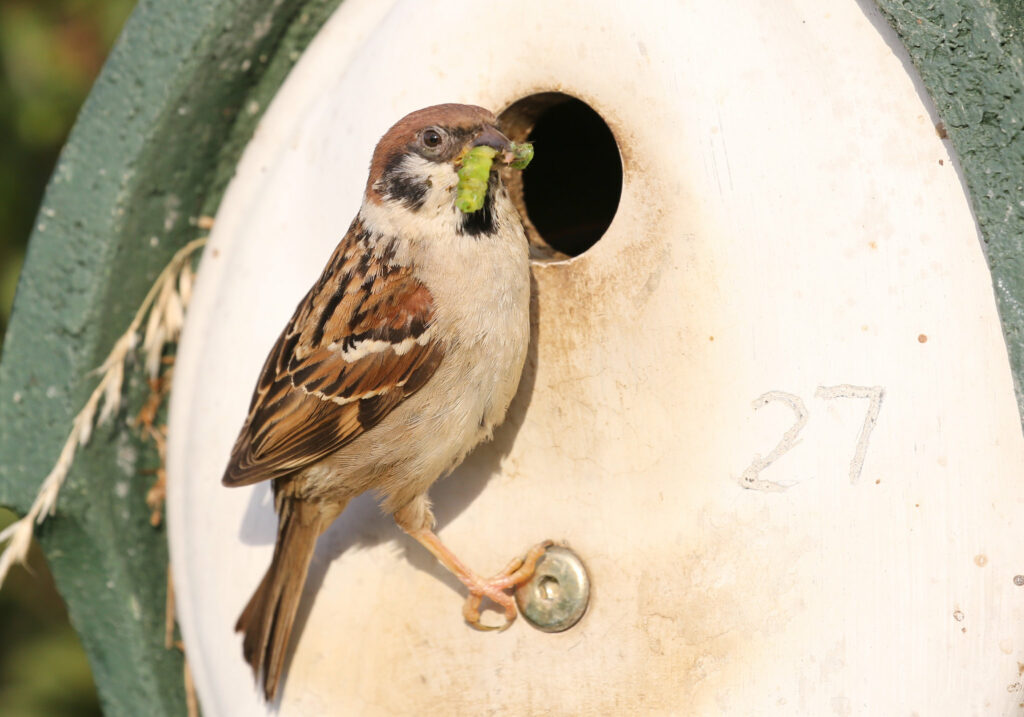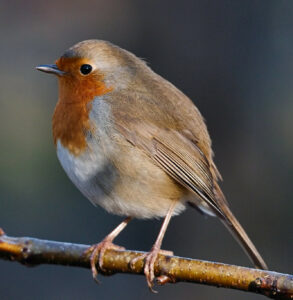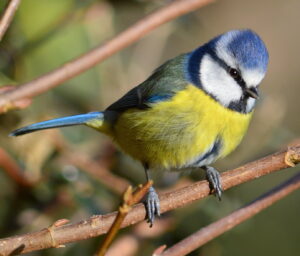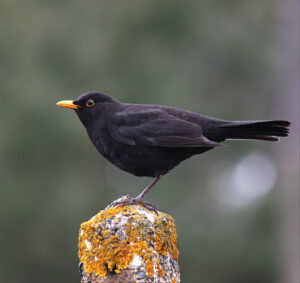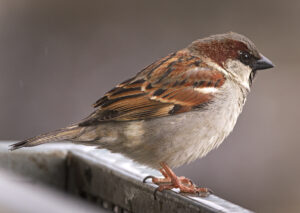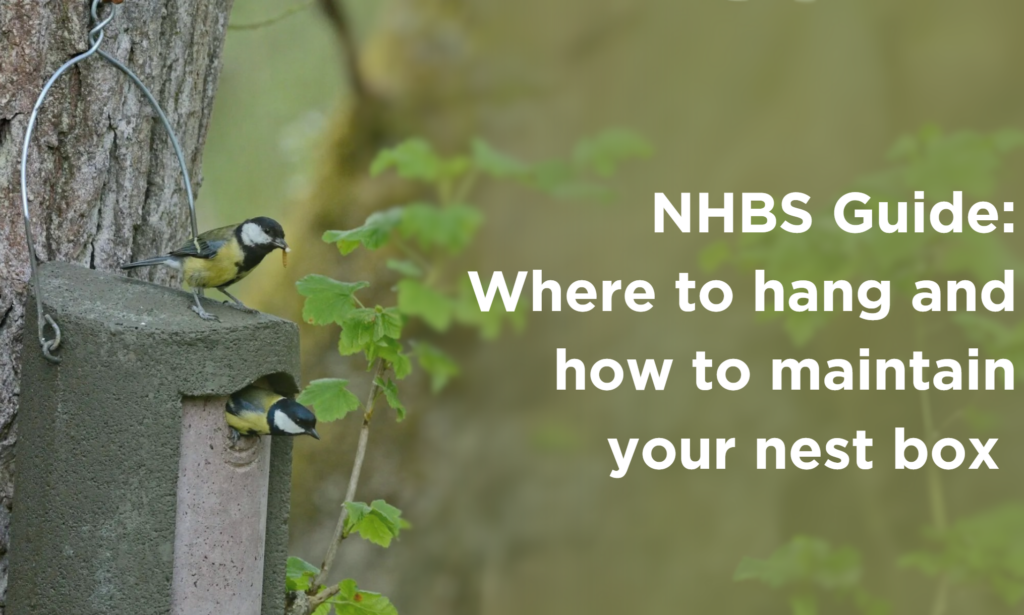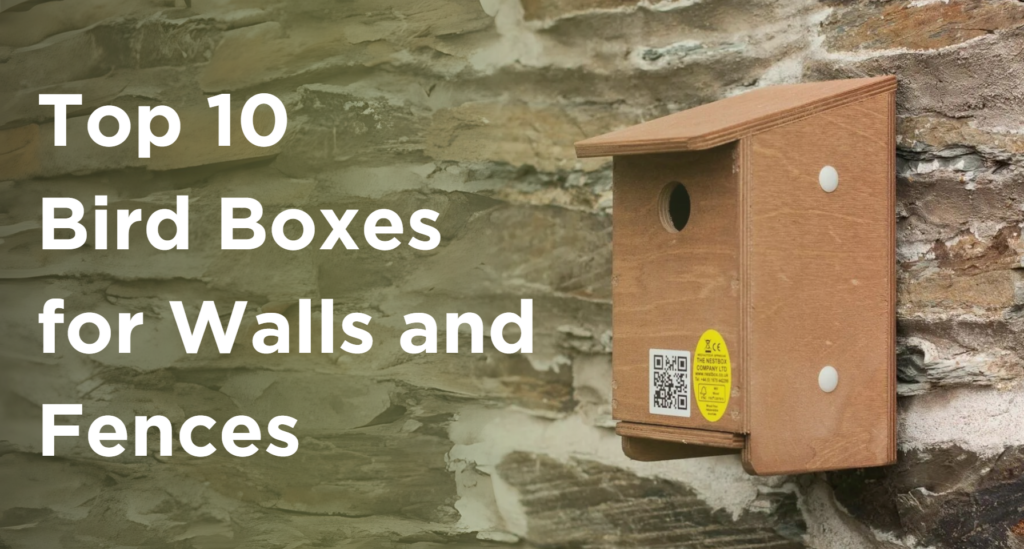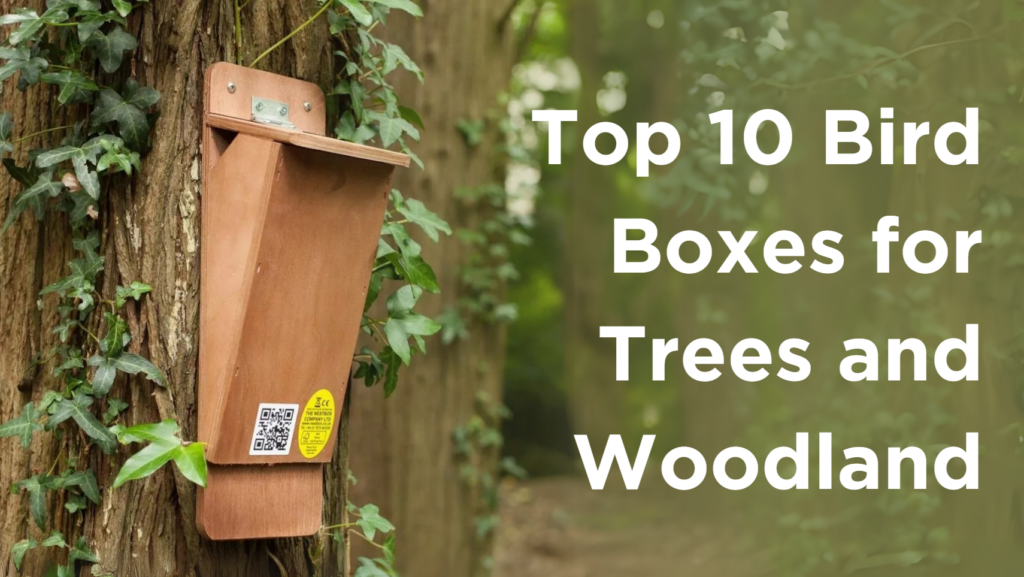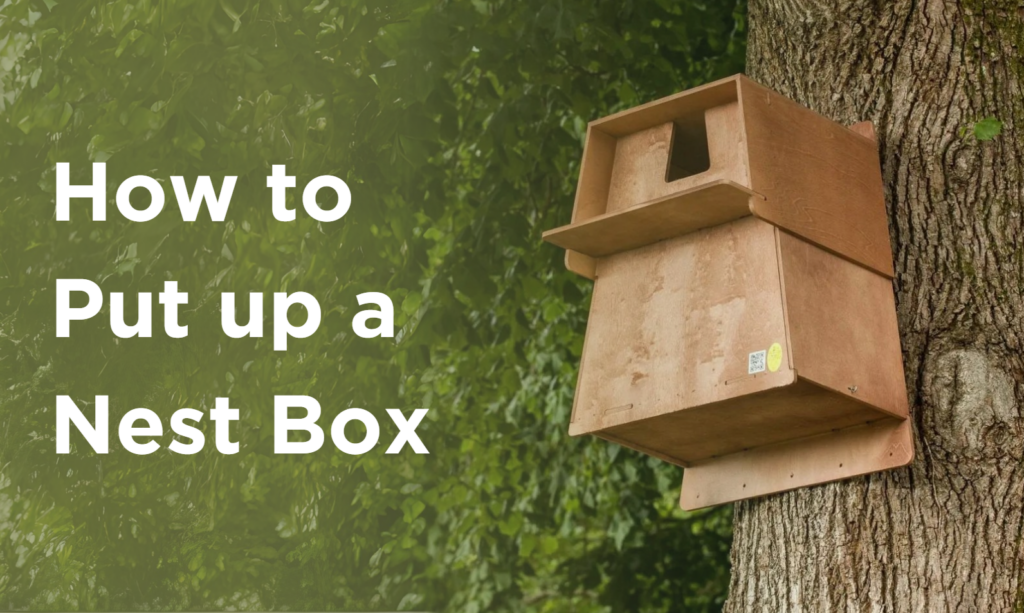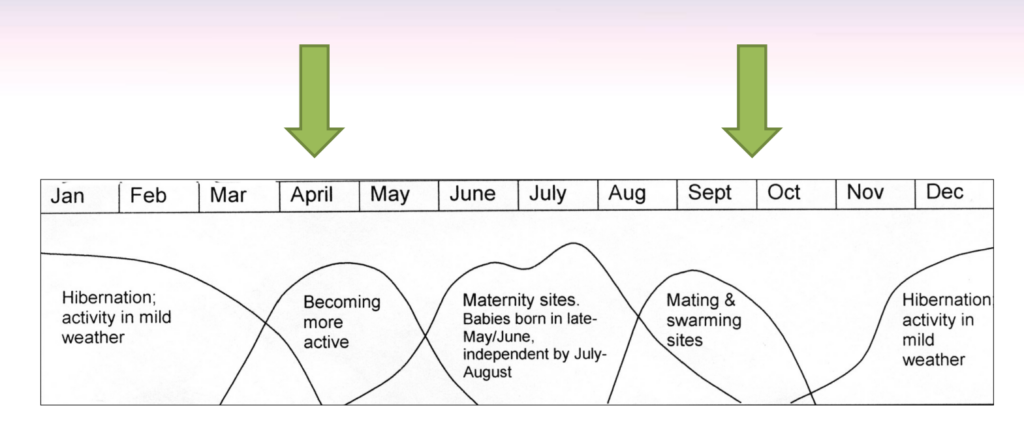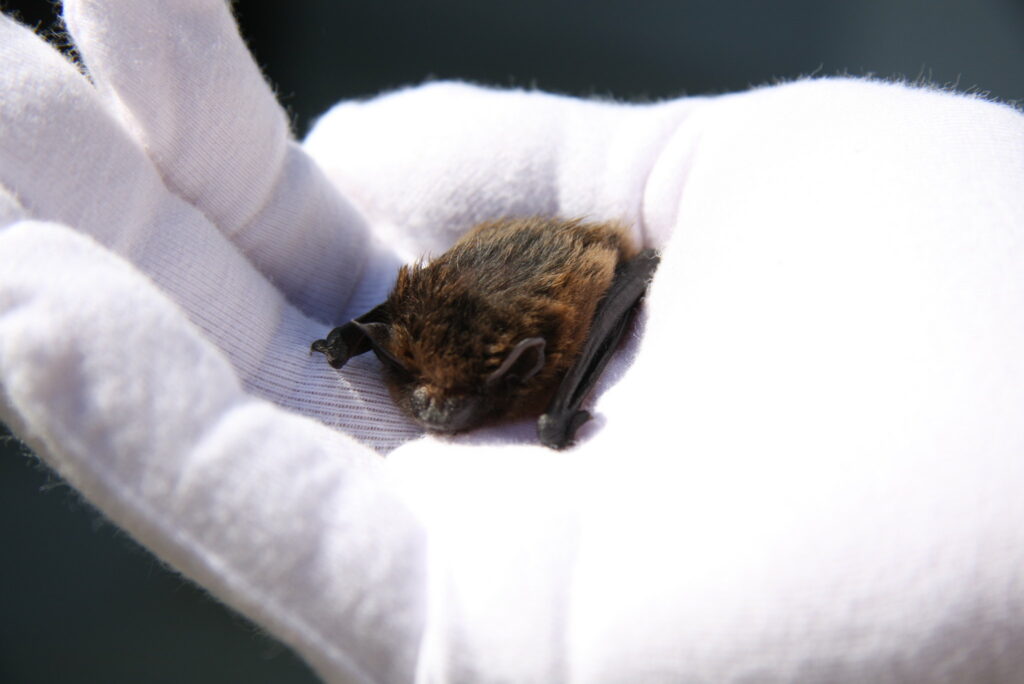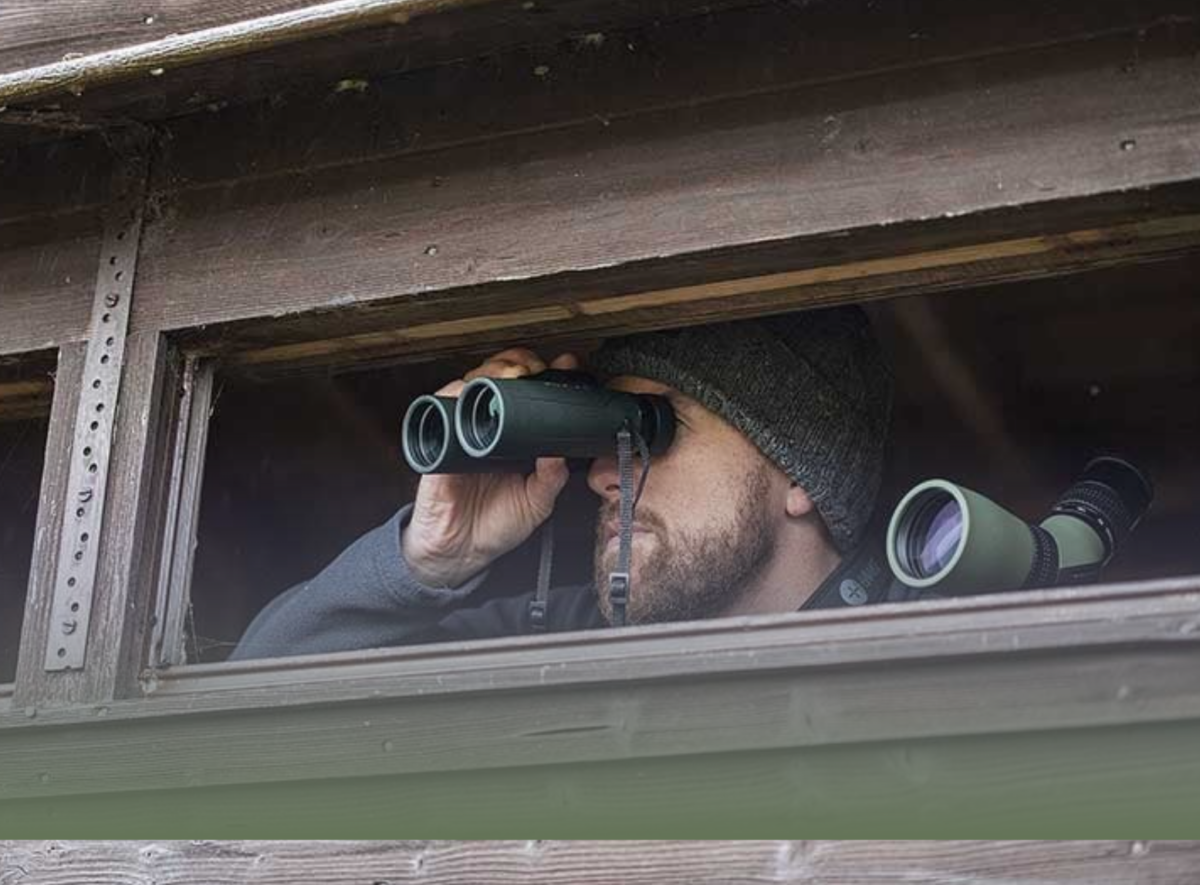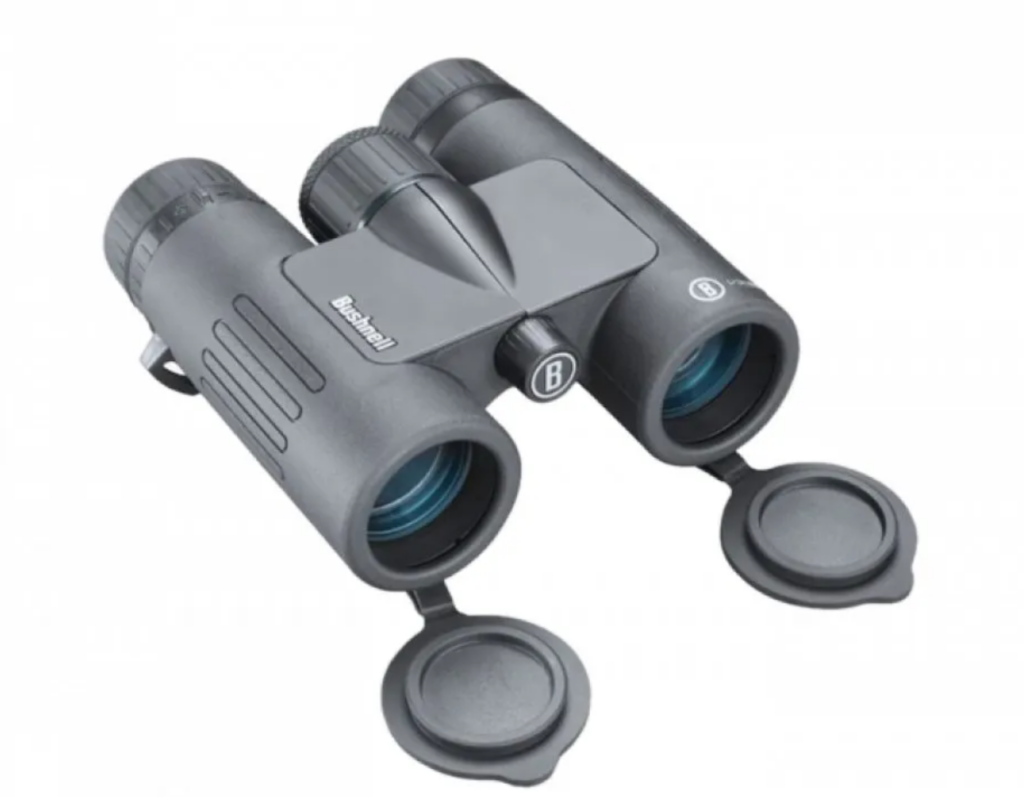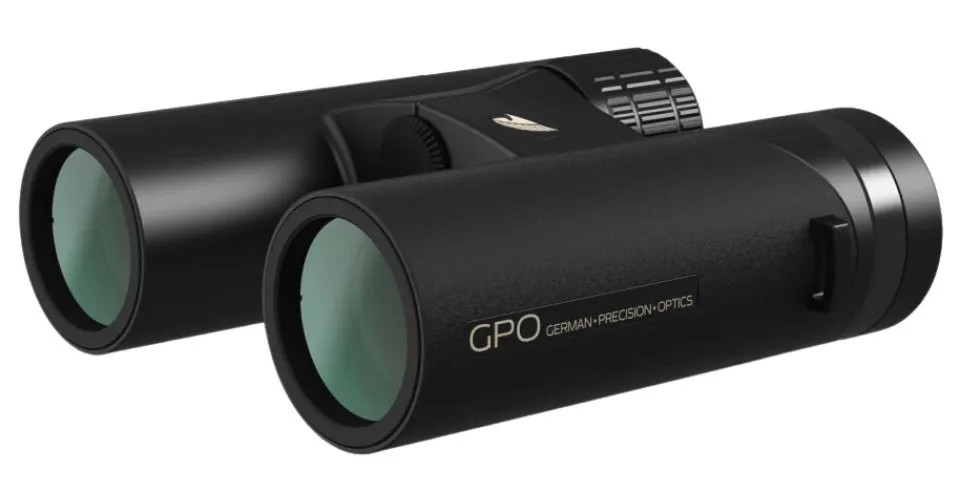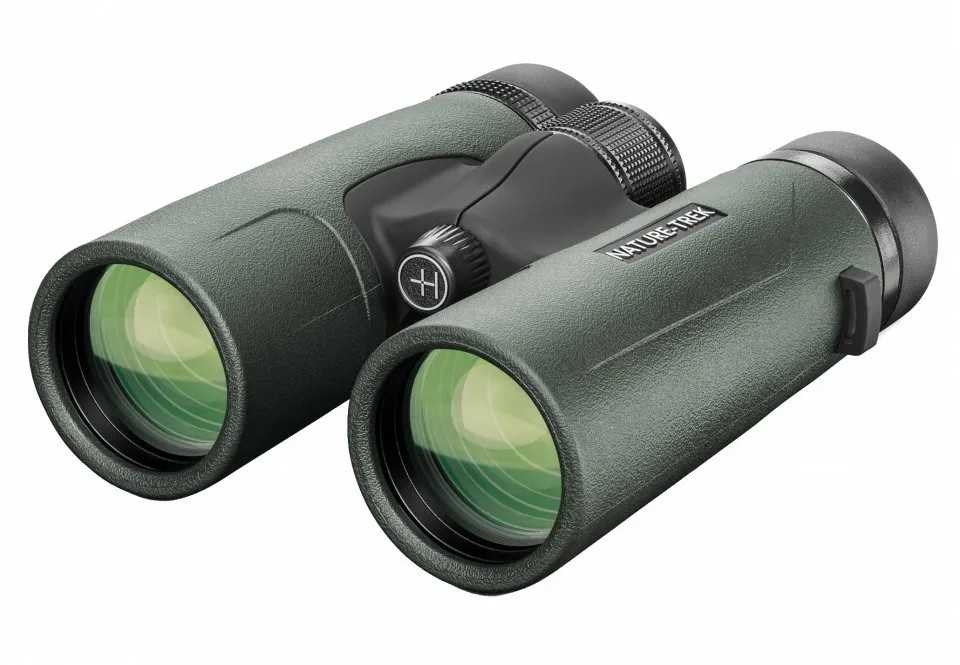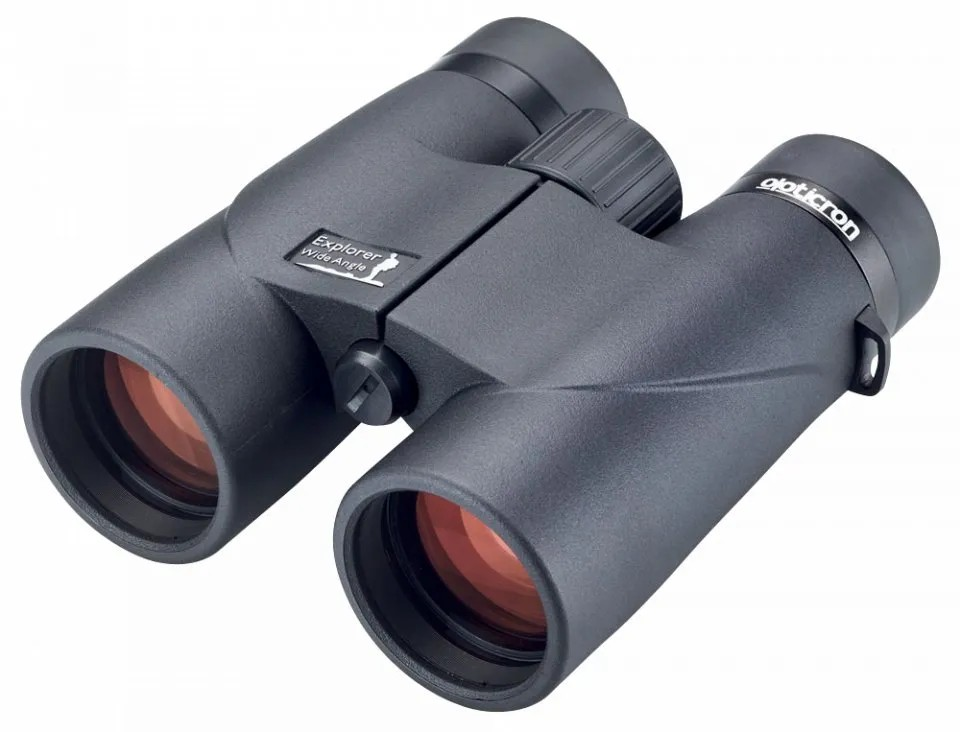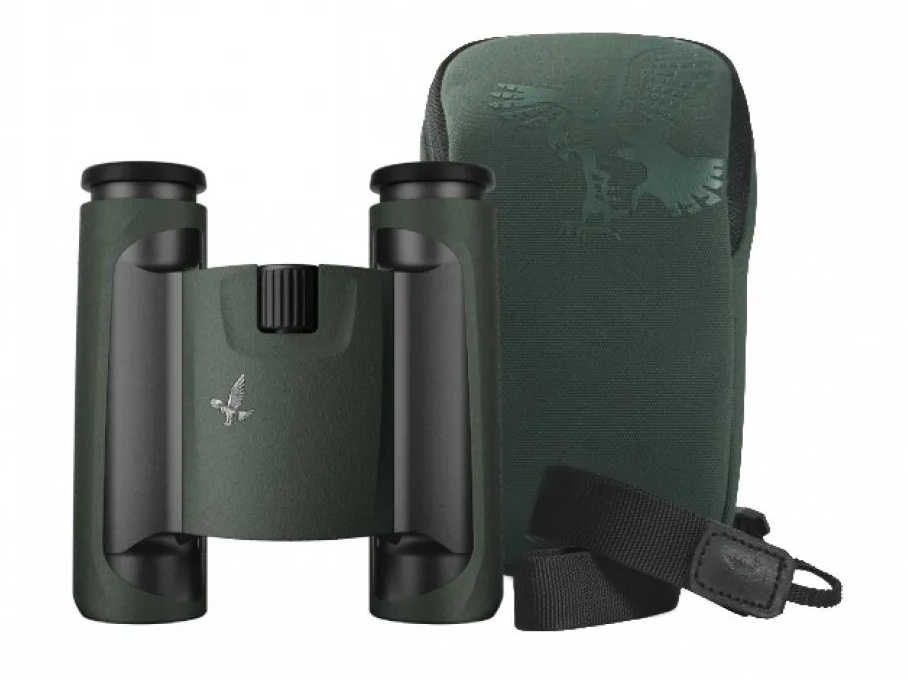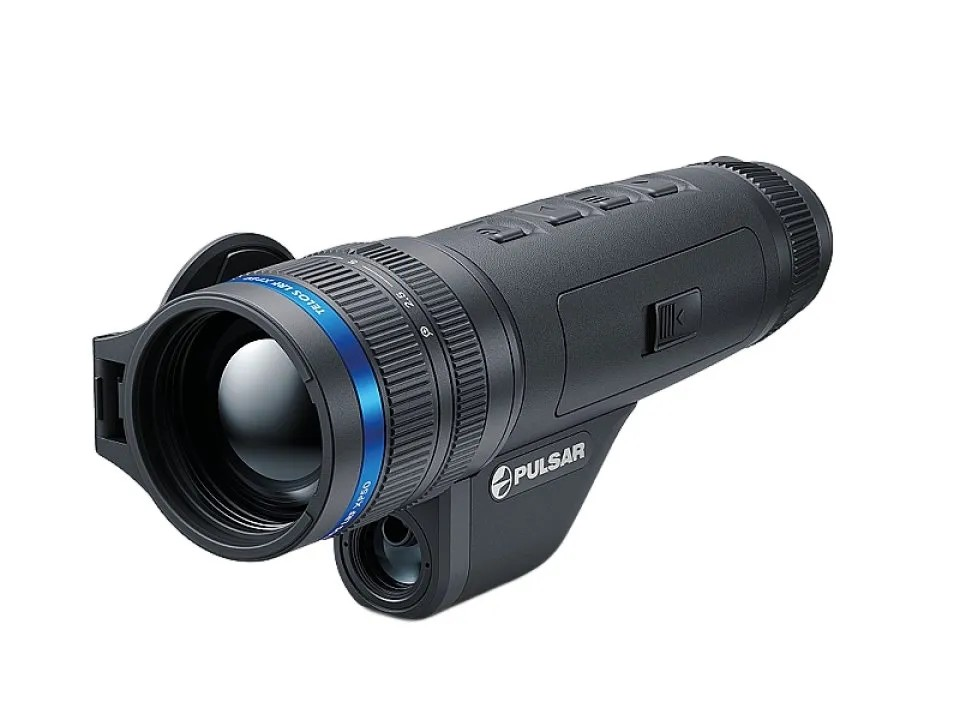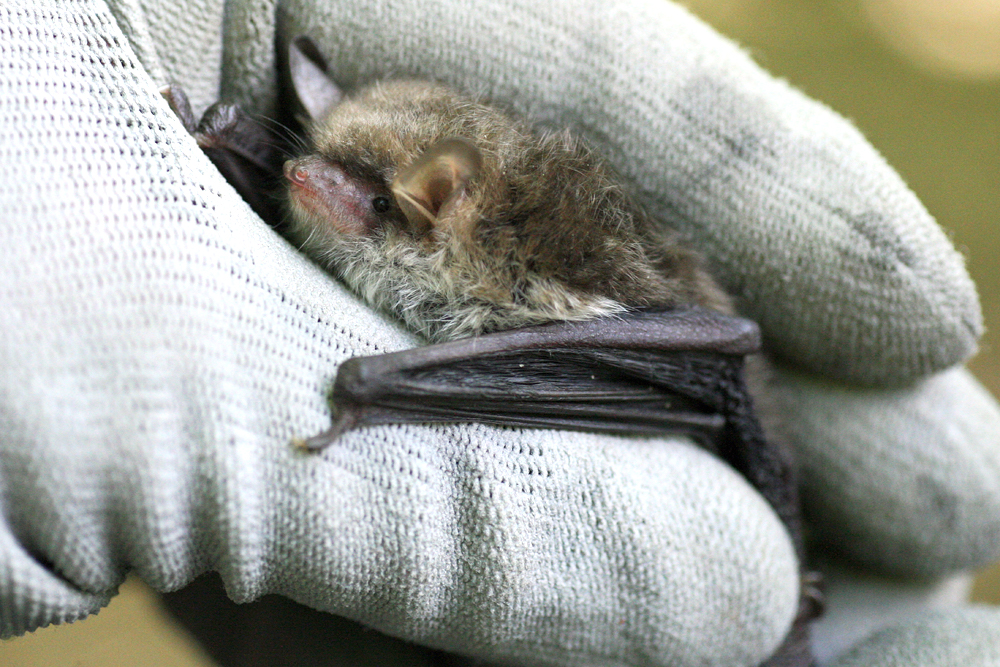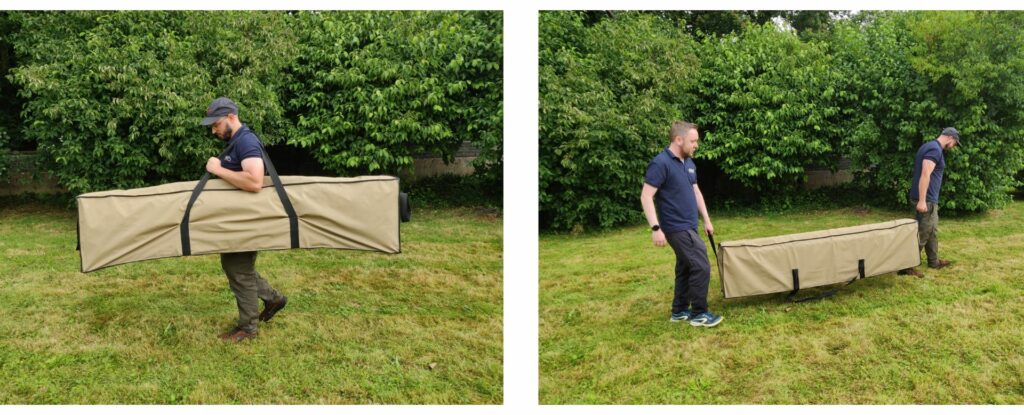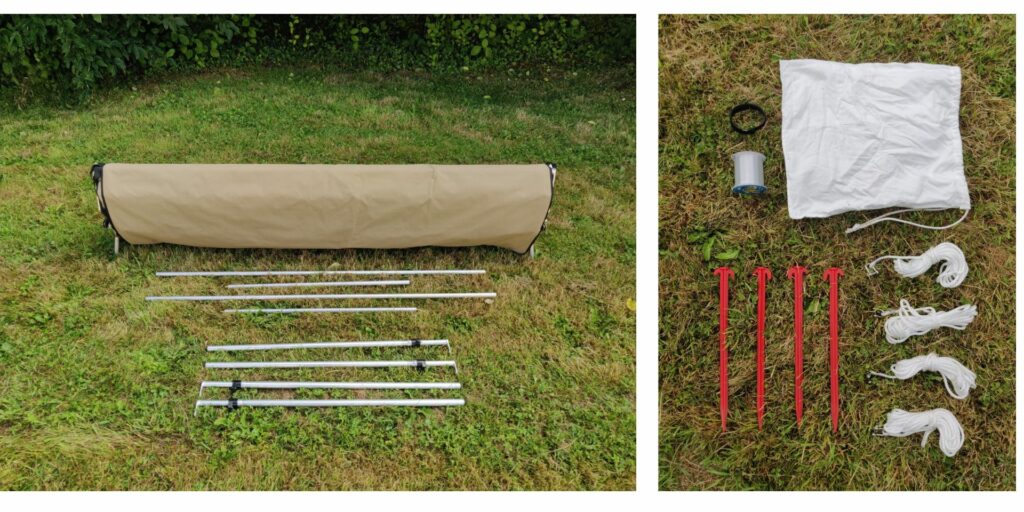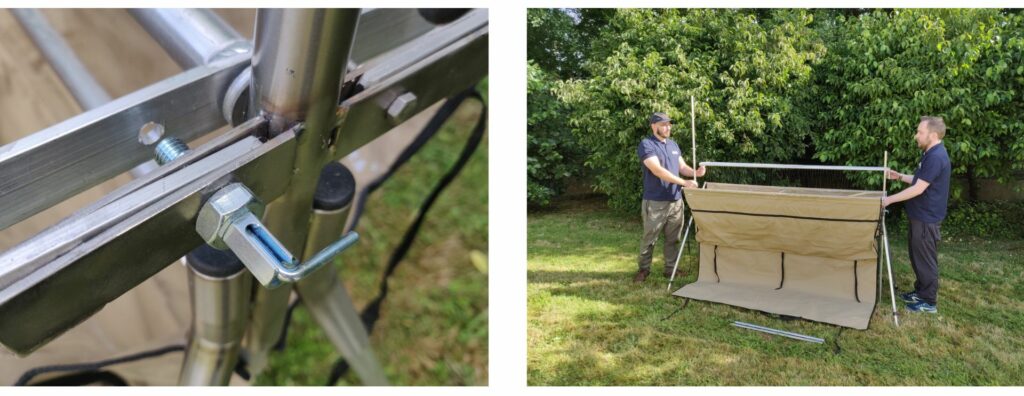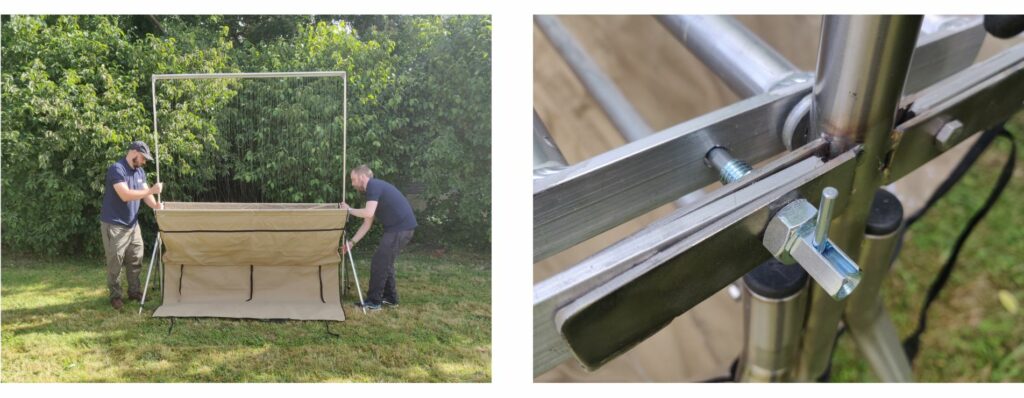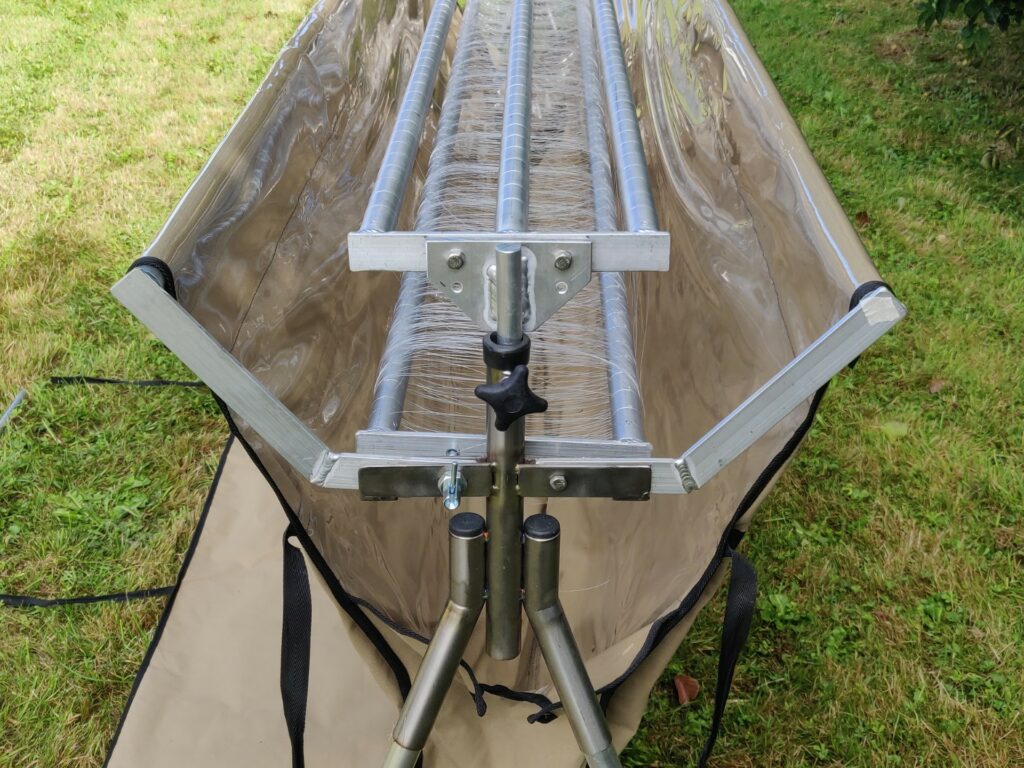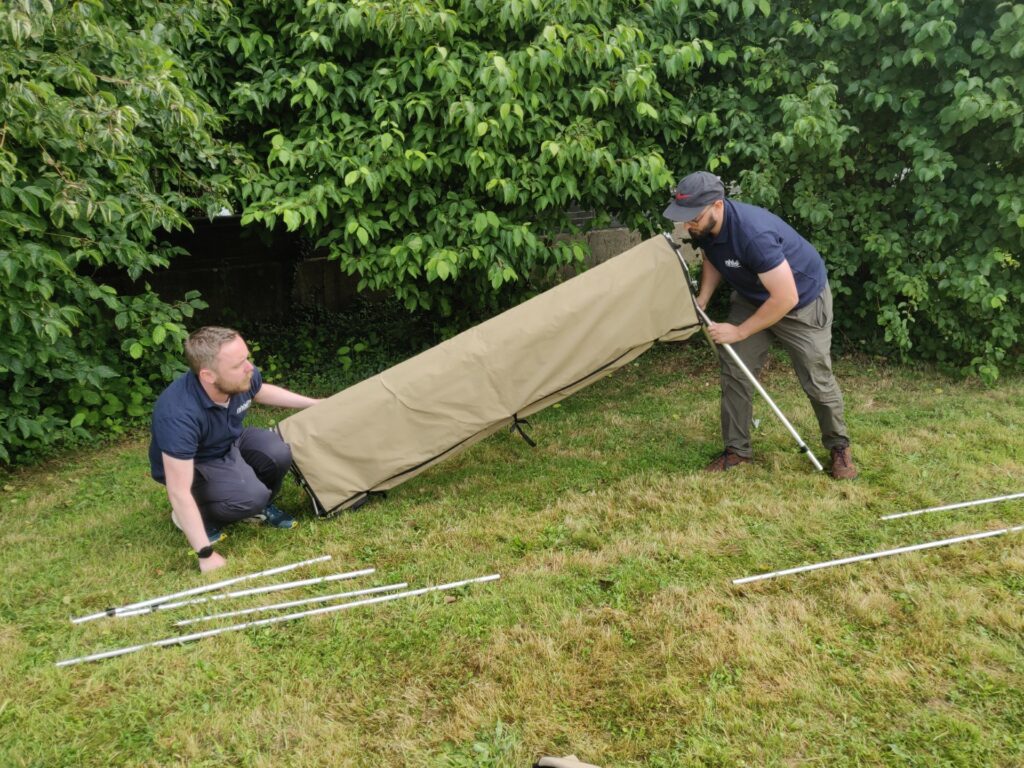
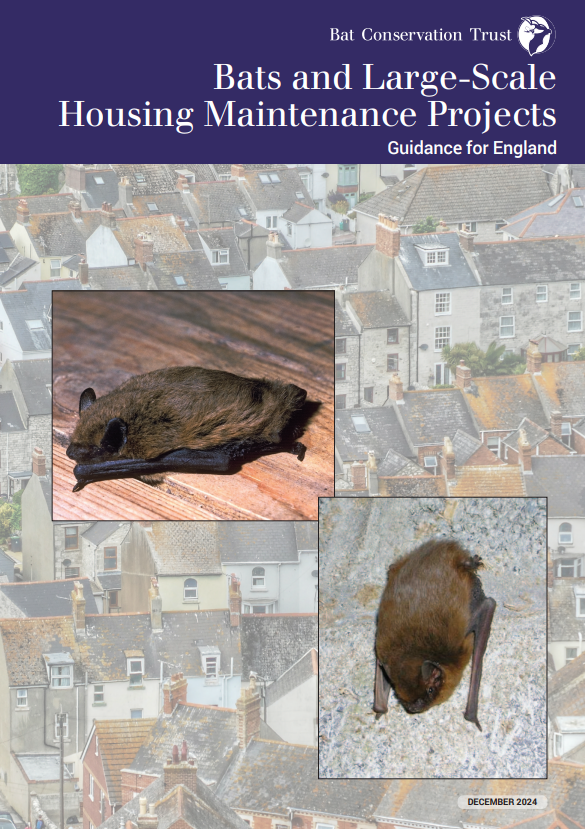 In December, the Bat Conservation Trust published Bats and Large-Scale Housing Maintenance Projects, a guidance document focusing on how to take bats into account when managing extensive housing repairs and maintenance. Designed for property owners, ecologists, architects and Natural England, the document is the product of the combined efforts of a working group who reviewed evidence in nine large-scale case studies. BCT held a webinar to outline the content of this guidance on 27th February 2025. A recording of the webinar will be available to purchase soon – email training@bats.org.uk to register your interest in the recording when it is published, or visit learn.bats.org.uk .
In December, the Bat Conservation Trust published Bats and Large-Scale Housing Maintenance Projects, a guidance document focusing on how to take bats into account when managing extensive housing repairs and maintenance. Designed for property owners, ecologists, architects and Natural England, the document is the product of the combined efforts of a working group who reviewed evidence in nine large-scale case studies. BCT held a webinar to outline the content of this guidance on 27th February 2025. A recording of the webinar will be available to purchase soon – email training@bats.org.uk to register your interest in the recording when it is published, or visit learn.bats.org.uk .
 Jan Collins has over 26 years of experience working and volunteering with bats. She has been the Head of Biodiversity at the Bat Conservation Trust for eleven years, following eleven years in ecological consultancy as a bat specialist. We recently had the opportunity to speak with Jan about the origins, production and implications of the recently published guidance.
Jan Collins has over 26 years of experience working and volunteering with bats. She has been the Head of Biodiversity at the Bat Conservation Trust for eleven years, following eleven years in ecological consultancy as a bat specialist. We recently had the opportunity to speak with Jan about the origins, production and implications of the recently published guidance.
Why did BCT decide to produce this guidance?
Evidence gathered from practitioners during the production of BCT’s Bat Survey Guidelines and CIEEM’s Bat Mitigation Guidelines highlighted that standard guidance documents for bat roost surveys and mitigation are not well-suited to large-scale housing maintenance projects where A) there is relatively limited potential for roosting bats, and B) where the principal focus is retention and repair, rather than demolition.
Additionally, our Wildlife Crime Project has assisted the police with several cases involving local authority maintenance carried out without due diligence for bats. At BCT, we are keen to see pragmatic solutions to protecting and conserving bats during property maintenance – and this guidance fits that bill!
Who was involved in the production of the guidance?
This guidance represents the combined efforts of a working group of practitioners from conservation, ecological consultancy, statutory nature conservation bodies and local authorities – their names are provided in the guidance document and their contribution is very highly valued by BCT. Each member of the group brought experience from a real-life, large-scale housing maintenance project in England, Scotland or Wales.
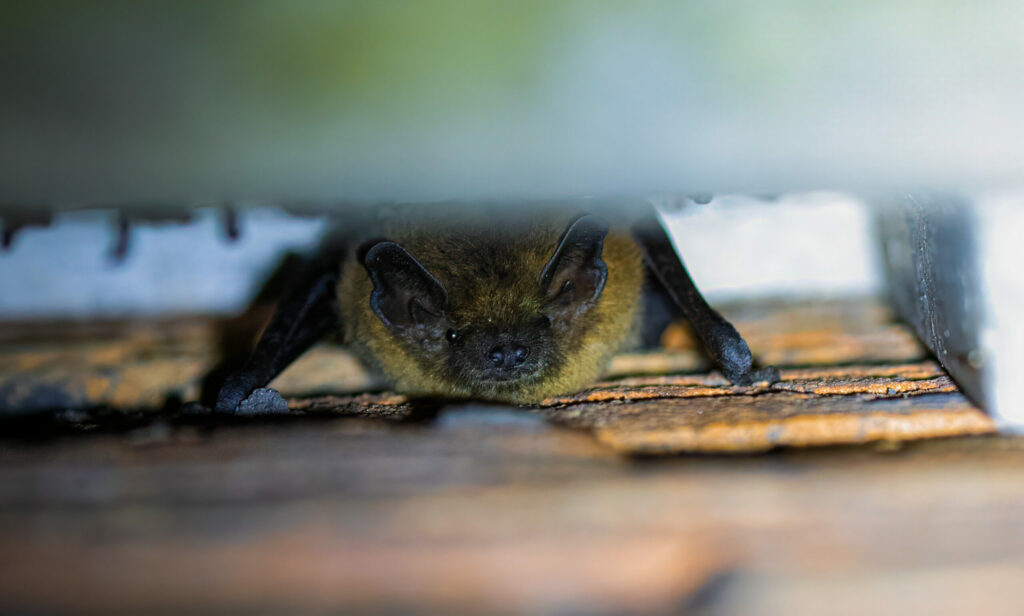
If the working group discussed projects in Scotland and Wales, why is the guidance limited to England?
The original intention was for the guidance to be applicable across Britain and Ireland, however Natural England was the only Statutory Nature Conservation Body (SNCB) able to contribute to the working group and review the final product. Therefore, this first edition is applicable specifically to England, and only English case studies are used for illustrative purposes. The principles and approaches set out are likely to be transferable, with licensing as the main difference – but we hope that contributions will be made by NatureScot and Natural Resources Wales in the future.
Can you outline the types of projects that these guidelines apply to in more detail for our readers?
The guidance outlines a set of factors which make projects more suitable to be treated as a ‘large-scale housing maintenance project’. These are as follows:
- Multiple properties of the same type, or a limited range of types, likely to have been constructed at the same time
- Small groups of houses in terraces or blocks
- Limited gardens attached to properties (or larger gardens but not maintained as green space)
- Limited suitable bat habitat surrounding the estate; other adverse factors such as lighting
- Small or cluttered roof voids (area, height and/or volume), or in such a condition or context that they are unlikely to support conditions for breeding by void-dwelling species
- Majority of properties assessed as negligible or low suitability
- The works concerned will allow reinstatement of roosting opportunities and, often, augmentation of these
- Properties are under single ownership e.g. owned by local authority, housing association or other public body
It’s also worth saying that some higher suitability properties may be present, but these would require standard survey approaches outlined in the latest edition of BCT’s Bat Survey Guidelines.
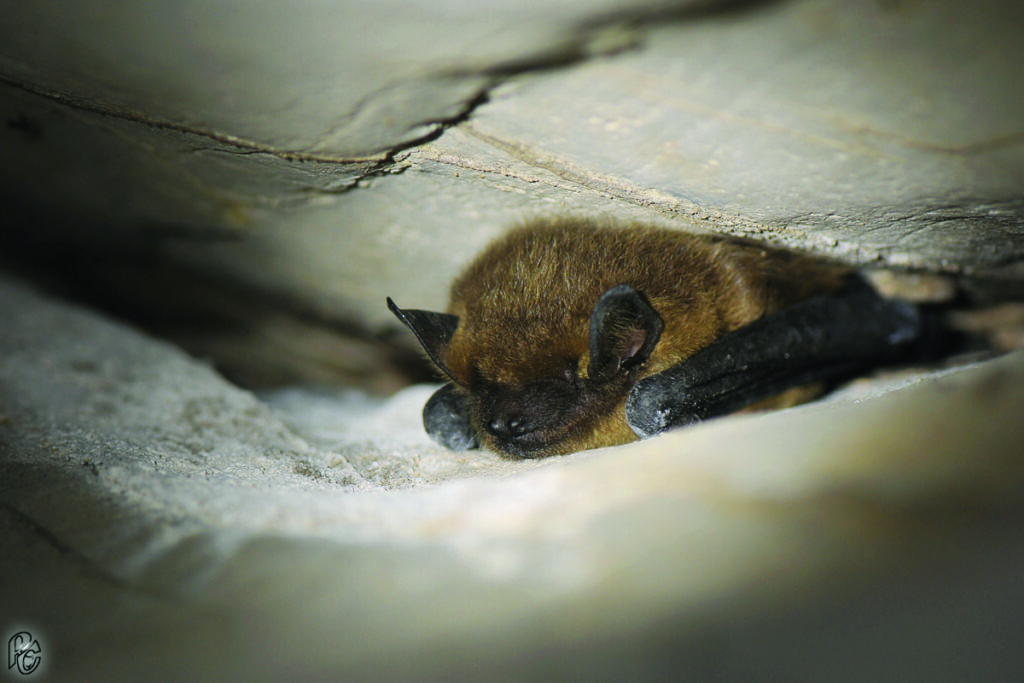
What else is covered in the guidance?
The guidance lays out some of the constraints when working on these types of projects – surveys are often constrained due to the vulnerability of residents or surveyors, or the practicality of gaining access for internal inspections. For this reason, pragmatic or creative approaches to surveys may be needed and some guidance on survey types/effort is offered. The key aims are to establish the roosting potential of properties and rule out the presence of maternity roosts.
Comment is also provided on appropriate licensing for this approach; the case studies presented were all licensed using Natural England’s Licensing Policy 4. Importantly, mitigation and compensation are covered, with an emphasis on ensuring bats are not harmed during works, any evidence of bats is recorded (see below) and access is retained for future roosting. Monitoring of outcomes is key to the approach and can allow methods to be adapted as a project progresses.
What are the two most important considerations when applying the guidance?
Early collaborative working between stakeholders is absolutely essential to establish what the project involves and what is likely to be appropriate regarding bat surveys and mitigation. Stakeholders include local authorities or other property owners, ecologists, Natural England and architects. This should be followed by close working with occupiers, contractors and other suppliers as the project progresses.
Monitoring is also essential to establish if the approach taken is suitable and how it can be iteratively adapted based on site-specific findings.
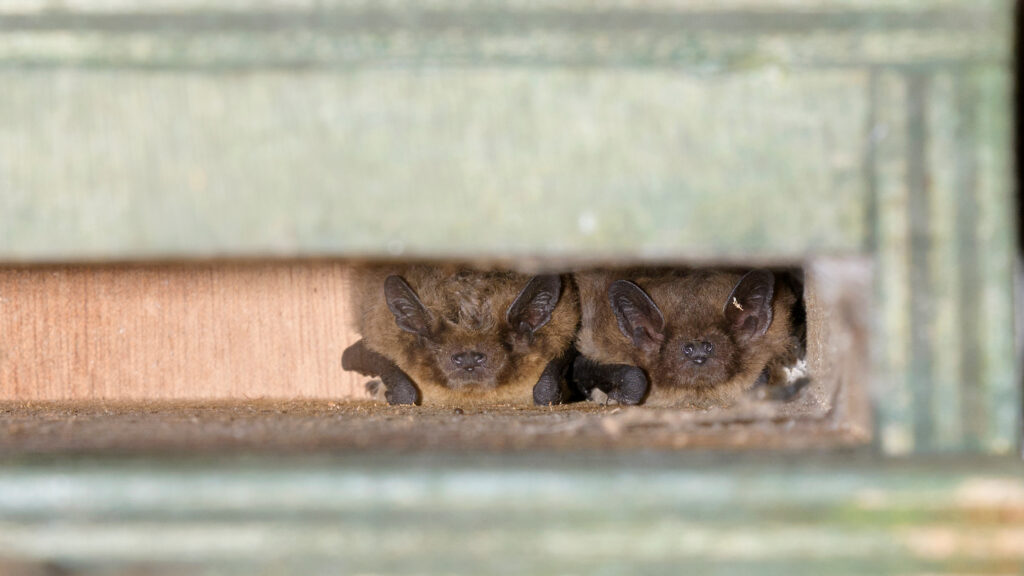
BCT are hosting a webinar discussing the guidance in February. Can you tell us more about it?
The webinar ran on?27th February 2025. Speakers included myself (Jan Collins of BCT), Phil Bowater of Natural England and Daniel Best of Cura Terrae: Land and Nature Division (formerly Ecus Ltd.). Phil and Daniel both worked on the Sheffield case study that is presented in the guidance and between us we were able to answer questions from the attendees.
Senior wildlife equipment specialist, Johnny, attended the guidance webinar. Here’s what he had to say about the session –
‘On behalf of NHBS, I attended the Bats and Large-scale Housing Maintenance Projects Guidance webinar last month. The session was insightful, well-structured and demonstrated the impressive extent of work and collaboration that has gone into the new guidance. To remain at the forefront of conservation, it is important that we attend a wide range of webinars to expand our knowledge and maintain our expertise, and this recent webinar allowed me to significantly improve my understanding of the challenges involved in ensuring positive outcomes for protected species in large-scale housing maintenance projects.’
A recording of the presentations will be available on BCT’s e-learning platform soon. Email training@bats.org.uk to register your interest or visit learn.bats.org.uk to find out more.
Any final words?
I would like to say thank you to the working group – it was a pleasure working with you all, and you brought so much valuable experience to the table. Thanks also to BCT for supporting the production of the guidance.
Finally, thank you to the sponsors of the guidance, including NHBS, Cura Terrae, I & G Ecology, Amey, Ecolybrium, DCS Ecology, Pell Frischmann, Southampton City Council and Gateshead Council.



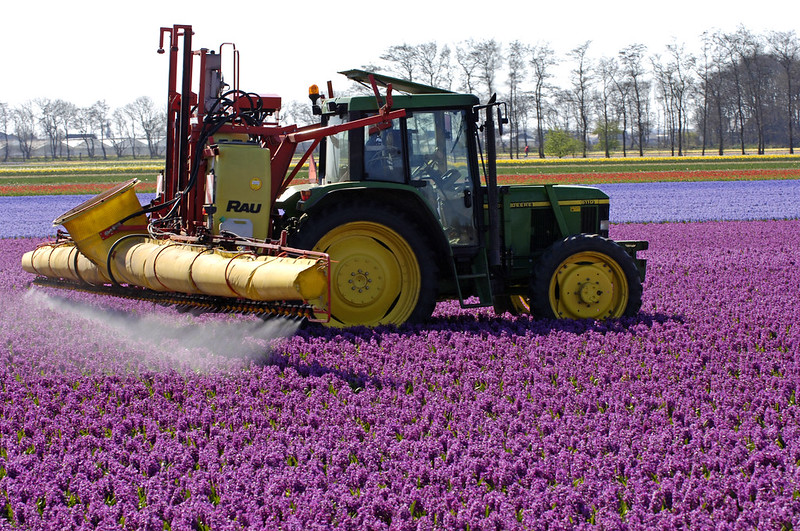
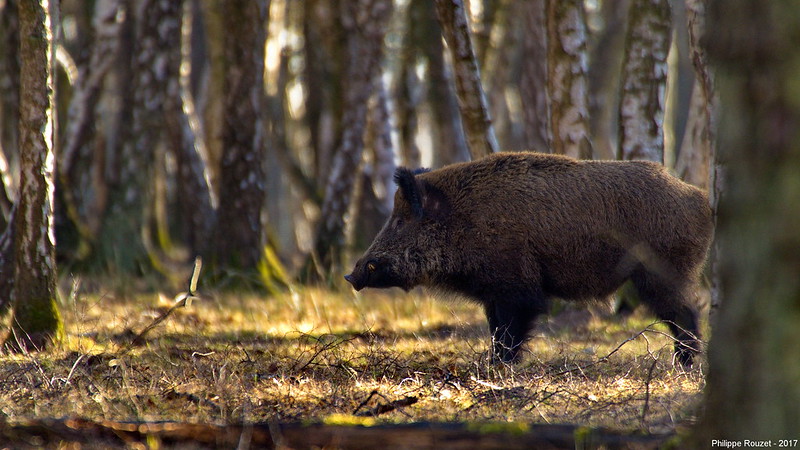
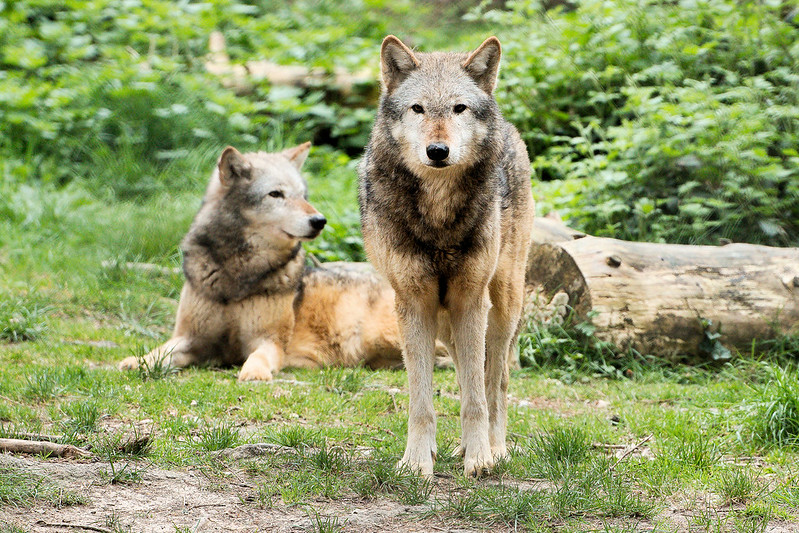
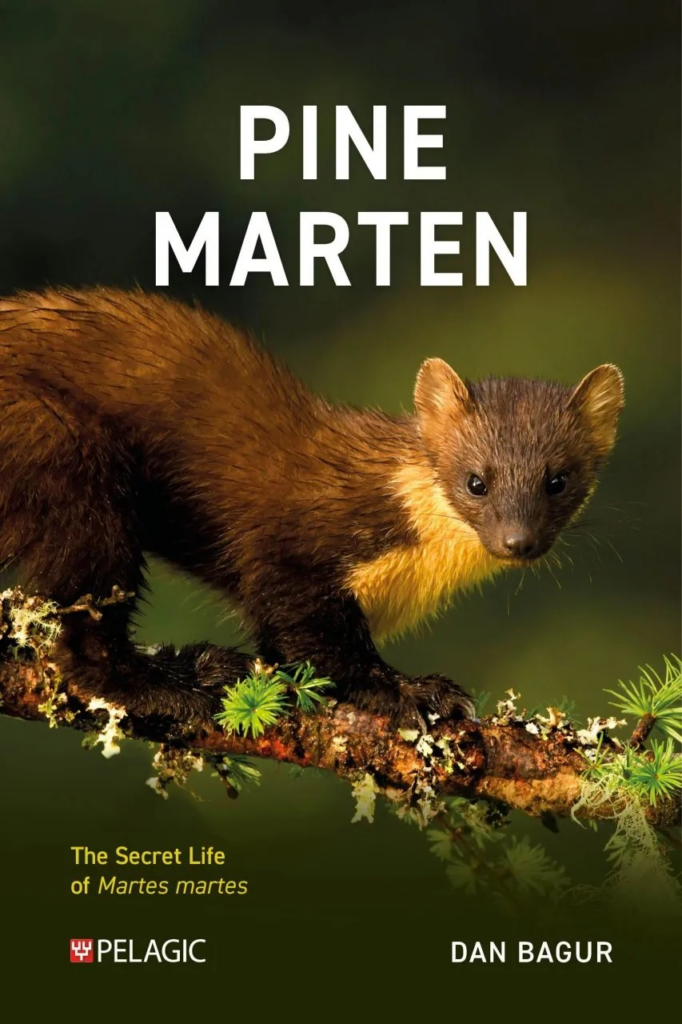
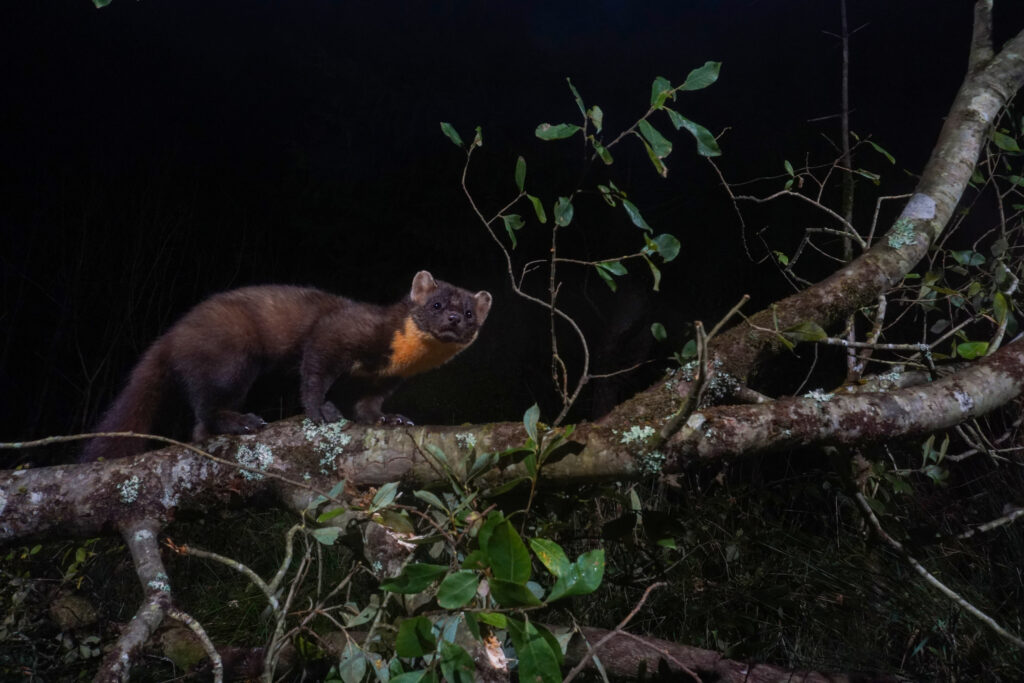
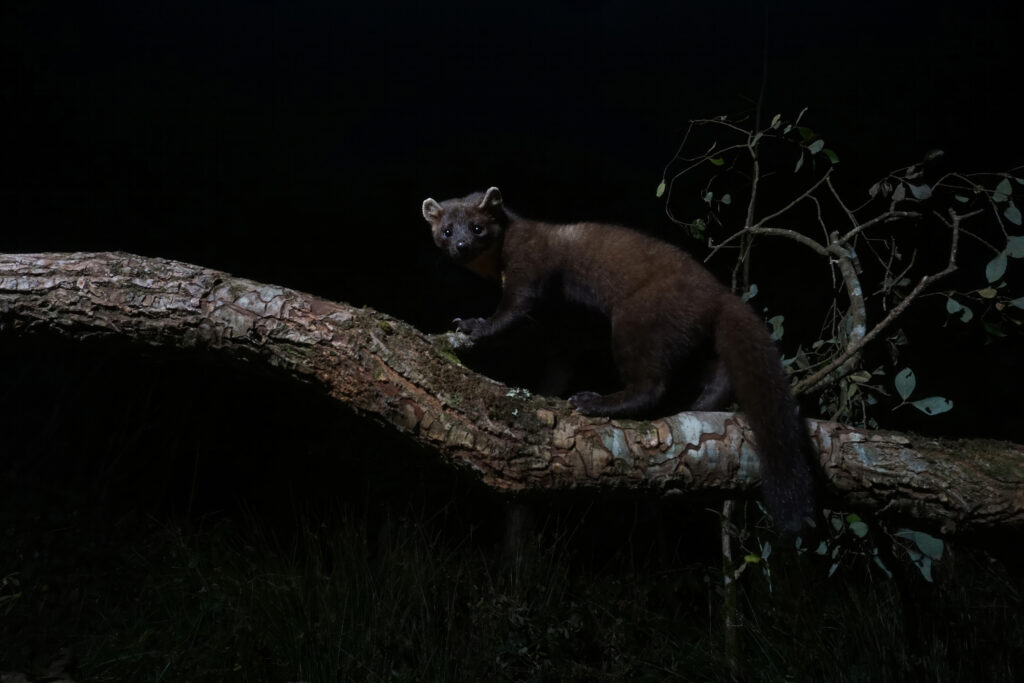
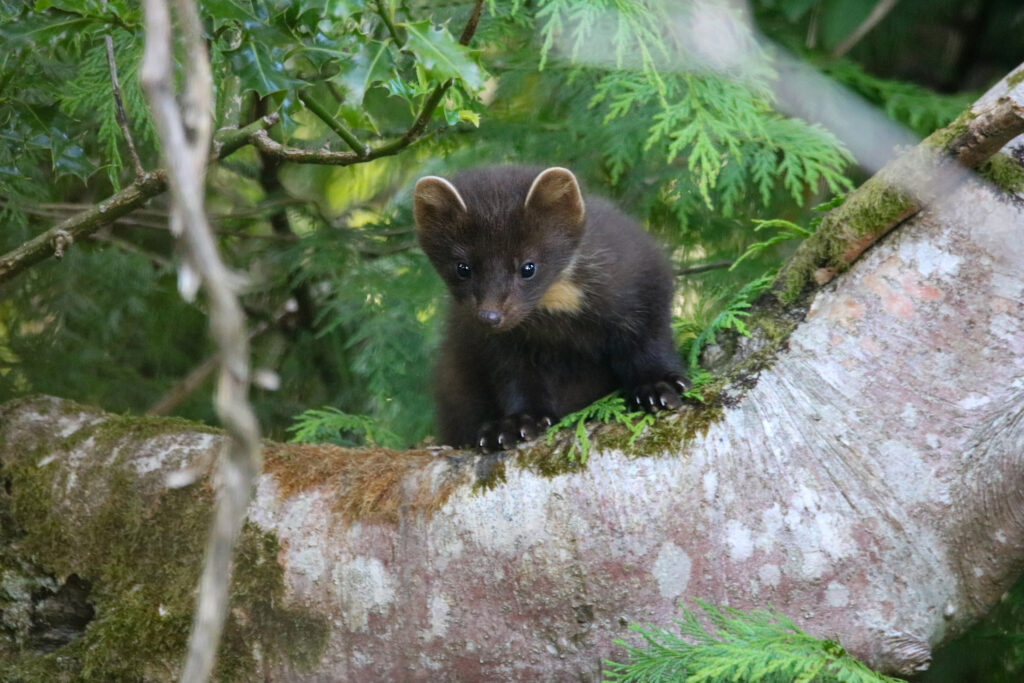
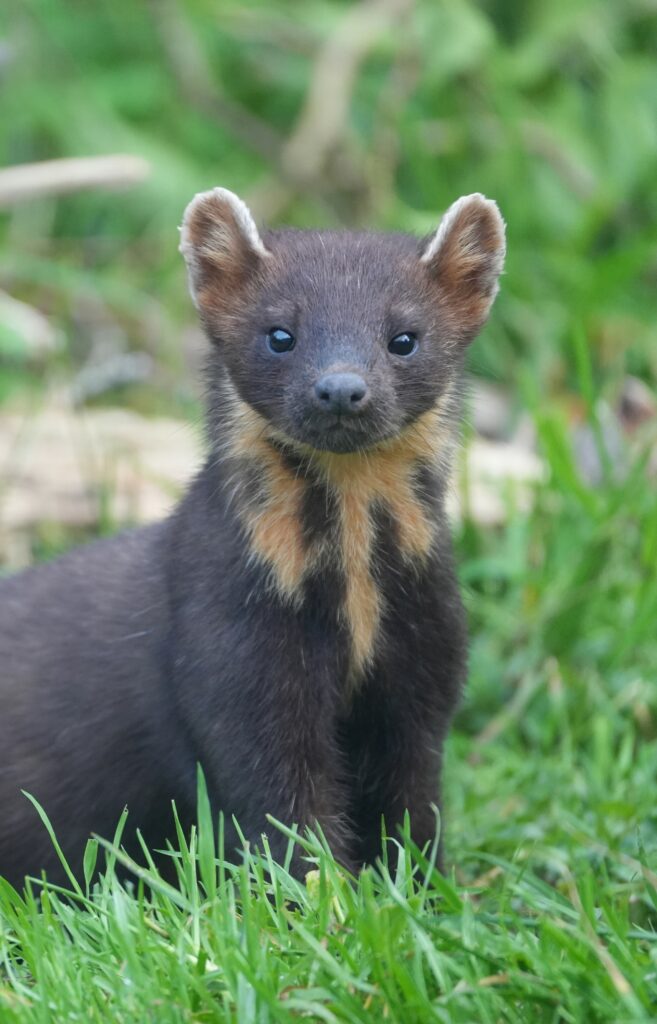
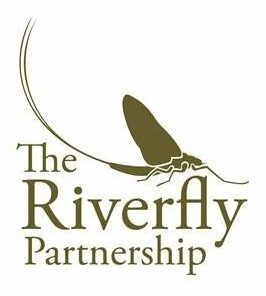
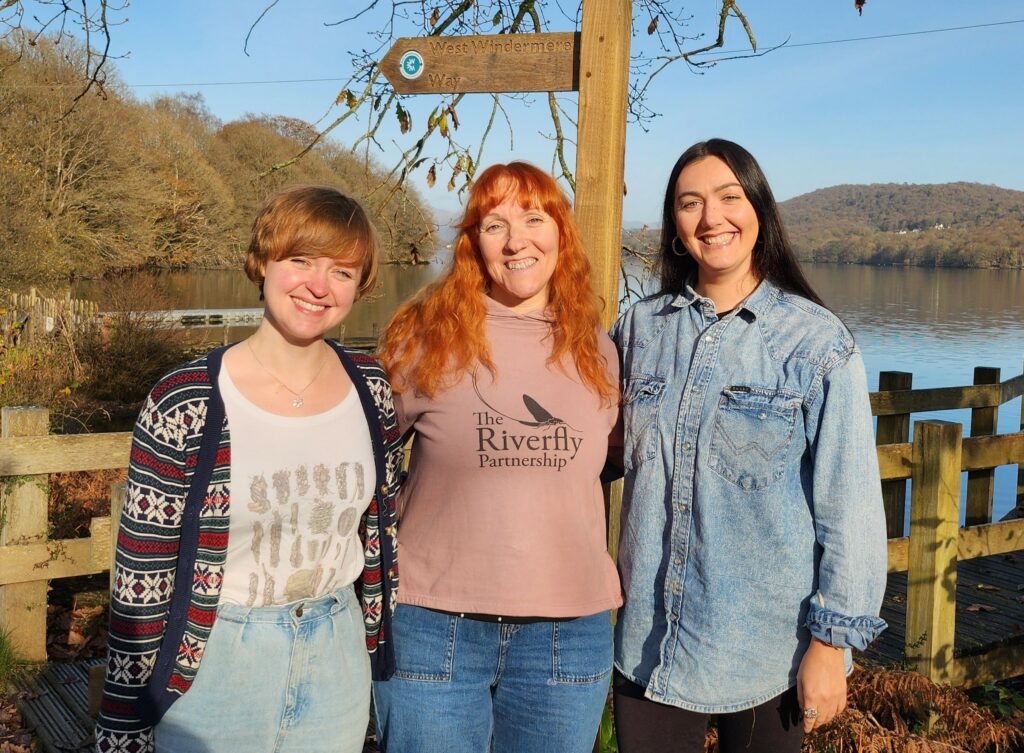 The Riverfly Partnership is a collaborative effort between anglers, conservationists, scientists, and water managers to protect the health and quality of our rivers. They use citizen science to monitor riverfly populations, which are sensitive indicators of water quality, and gather data on these fascinating insects to contribute to a better understanding of river ecosystems.
The Riverfly Partnership is a collaborative effort between anglers, conservationists, scientists, and water managers to protect the health and quality of our rivers. They use citizen science to monitor riverfly populations, which are sensitive indicators of water quality, and gather data on these fascinating insects to contribute to a better understanding of river ecosystems.